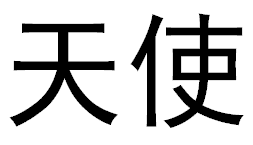This one will probably be a little obscure for those of you with no interest in etymology. Or the Japanese language. Or etymology of unusual terms in the Japanese language.
See I’m not sure if you’ve heard, but Japanese is a really hard language to learn. F’r instance, there are different counters for all sorts of things. The words for counting bottles, books, large animals, small animals, appliances, cars, people, and pieces of paper are all different, (and there are many more) which brings me to today’s word.
The two kanji there are read “tsuitachi,” which is the word for the first day of the month, and up until now I’ve had a hard time remembering it because it bears no resemblance to any of the other counters I mentioned. In my Japanese lesson this evening, I was fumbling for the word when my Japanese teacher gave me a brief history lesson explaining the root of the word. (It gets a little geeky here…)
The word for “moon” is “tsuki,” and the verb “to stand” is “tachimasu.” (You may already see where I’m going with this.) It’s just a hop, skip, and a jump from “tsuki” + “tachi” to “tsuitachi.” Knowing that Japan used to use a lunar calendar will help you draw the logical connection between a “standing moon” and a new month.
If you’re not quite there, it may help to know that the first kanji (朔) by itself means “new moon,” and the second kanji (æ—¥) by itself means “day.” Again, “new moon day.”
See, now doesn’t that help? 😛

